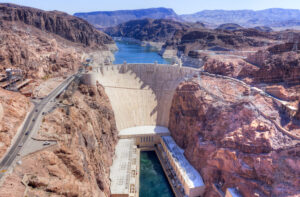
We’ve discussed the mechanisms of sulfate attack in a previous blog. Soils in the western United States and the prairie provinces of Canada often contain high concentrations of sulfates. The highest concentrations are generally in areas of poor drainage, which, combined with the low rainfall, prevents the sulfates from leaching out.
The sulfate is locally called “alkali”. It is responsible for the “Bitter” lakes which will not support fish life.—Thomas J. Reading, US Army Corps of Engineers, 1975
You can characterize the sulfate exposure class for your site by analyzing the soil in accordance with ASTM C1580. Be aware, though, that sulfate concentrations aren’t necessarily uniform throughout a site.
Unfortunately, there’s no such thing as sulfate-proof portland cement concrete. However, appropriate supplementary cementitious materials, mixture proportions, and concreting practice make for sulfate-resistant concrete.
When and how did engineers come to understand sulfate attack? That is, what did they know and when did they know it?
Beginning in the early 1900s, engineers noticed that concrete structures in contact with soils in the western US and Canada were deteriorating. At first, they associated the deterioration with poor-quality concrete. But by 1918, everyone recognized that even high-quality concrete was susceptible.
Soil samples taken from areas around …here in Las Vegas show very high soluble sulfate contents. Therefore, our construction specifications in this area require not only a Type V cement but also a good sulfate resistant pozzolan.—Edward M. Harboe, US Bureau of Reclamation, 1982
Milestones in how we understand sulfate attack
- 1927-1929: Thorbergur Thorvaldson and his associates correlated poor sulfate resistance with high alumina- and lime contents and low ferric oxide content.
- 1929: Robert H. Bogue published his seminal paper, “Calculation of the Compounds in Portland Cement.” This is still the basis of how we use the results of an oxide analysis to calculate the relative amounts of the various compounds in portland cement.
- 1931: E.T. Carlson and P.H. Bates correlated sulfate resistance with the C3A (tricalcium aluminate) content of the cement.
- 1933: Fleming announced the feasibility of manufacturing highly sulfate-resistant cement.
- 1941: The Portland Cement Association established its sulfate exposure test site in Sacramento, CA. They added more samples in 1949 and 1958.
- 1960: ASTM published the first version of ASTM C452, “Standard Test Method for Potential Expansion of Portland Cement Mortars Exposed to Sulfate.” It applies only to portland cements. (ASTM C1012, “Standard Test Method for Length Change of Hydraulic-Cement Mortars Exposed to a Sulfate Solution” applies to any hydraulic cement.)
Ft. Peck Dam—a case study
The planning of Ft. Peck Dam in Montana began in 1934. The planners obtained samples of 32 cements and tested them for sulfate resistance. The test consisted of partially immersing neat cement slabs in a sodium sulfate solution, maintaining the sulfate concentration with daily additions of sulfuric acid. Thirteen of the cements deteriorated visibly and so were unacceptable for the project.
The problem was recognized at the time of construction of Ft. Peck Dam in the mid-30’s, and this is perhaps the first major project in the U.S. where a sulfate resistant cement was specified. Since that time, the Corps has further tightened its cement specifications in areas where the ground water is high in sulfates….Most of the Ft. Peck studies were carried out in the late-50’s, when the concrete was found to be in surprisingly good condition considering the severe exposure, The overall condition of this concrete is still apparently very good, although a few local areas of fairly severe deterioration have developed which required repair.—Thomas J. Reading, US Army Corps of Engineers, 1975
During construction, the Ft. Peck District Laboratory performed quality control tests of the cements, rejecting any that failed their sulfate resistance test. They also conducted research on sulfate attack. Their search for an alternative sulfate resistance test was not successful. However, they found a strong correlation between the C3A content of the cement and its sulfate resistance.
The concrete in Ft. Peck Dam had a higher portland cement content (564 lb/ft3) than we’d use today for mass concrete. We’d use supplementary cementitious materials, both for sulfate resistance and thermal control. And we’d reduce the water-cementitious materials ratio to 0.40 rather than the 0.49 they used. Still, the concrete performed very well, as Reading noted 40 years after construction.
